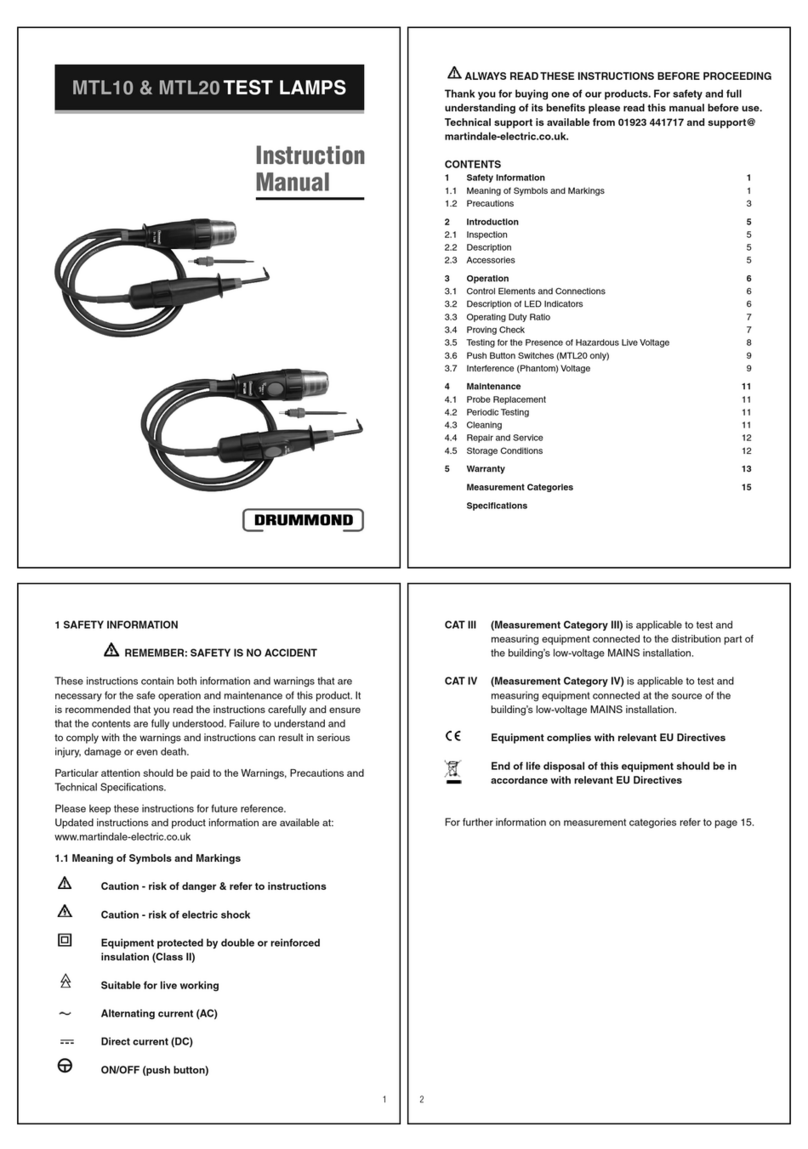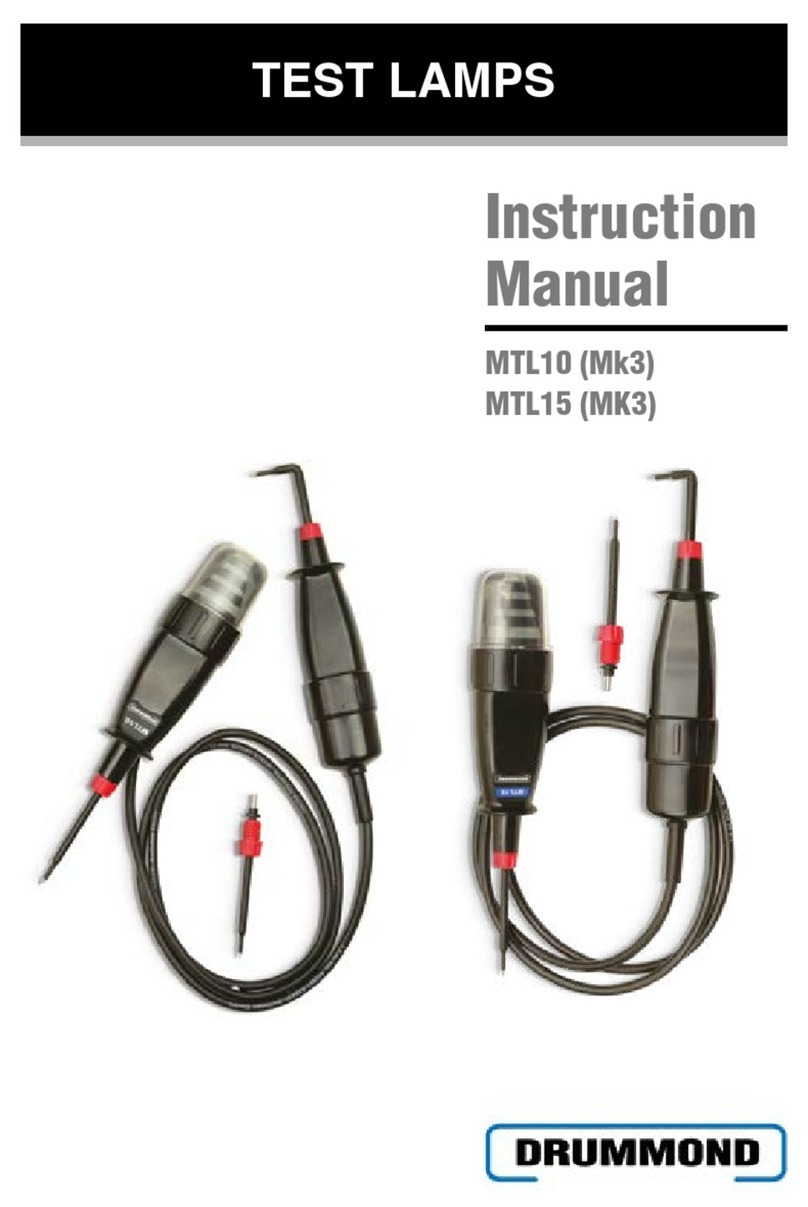
4
Make sure the voltage indicator is dry, clean and free from dust,
grease and moisture while in use to avoid the danger from electric
shock due to surface leakage.
Before and after each use, the voltage indicator must be proven
using a suitable proving device or a known good voltage source.
Do not use the voltage indicator if any expected LED’s fail to
illuminate correctly during proving.
Testing for a voltage that exceeds the specied limits of the voltage
indicator may damage the voltage indicator and may expose the
operator to a shock hazard. Always check the voltage indicator’s
specied limits before use.
The specied measurement category means the voltage indicator
will be safe to the user if connected to a voltage up to 1000V to
earth on a CAT II or CAT III installation and 600V to earth on a
CAT IV installation. It does not mean it can be used to test for a
voltage beyond its maximum specied limits.
If using the voltage indicator in falling rain or damp conditions, the
operator must use additional protection to avoid the danger from
electric shock due to surface leakage.
Select appropriate test prods and secure with captive ring nuts. The
L-shaped test prods should be oriented in one of four directions
using the square location feature before it is secured.
When changing or adjusting the prods, ensure that both prods have
been disconnected from any source of power or other equipment.
Always keep your ngers behind the nger guards. Never touch the
exposed metal prod tips.
The different indicating signals of the voltage indicator (including the
ELV limit indication) are not to be used for measuring purposes.































